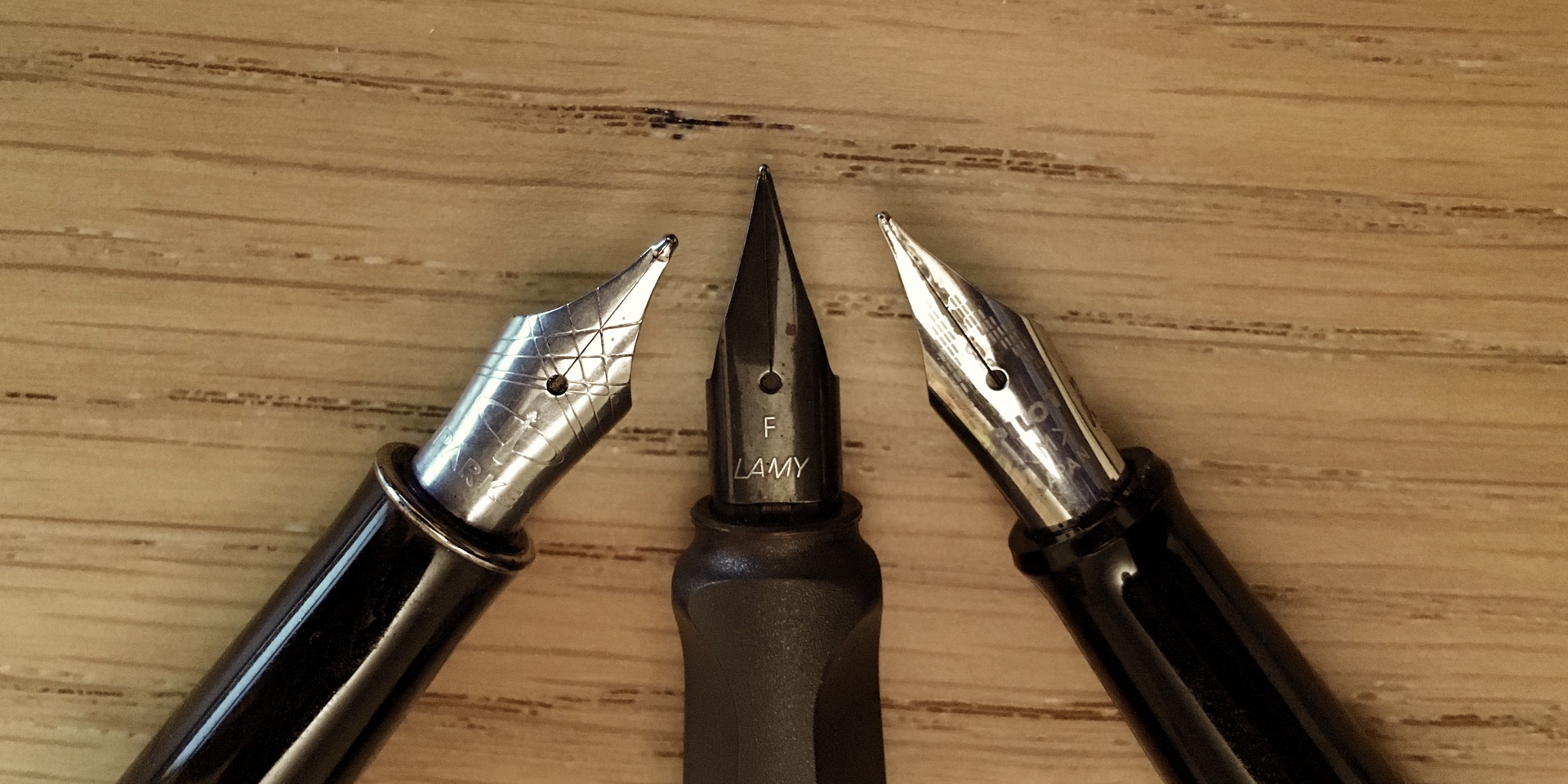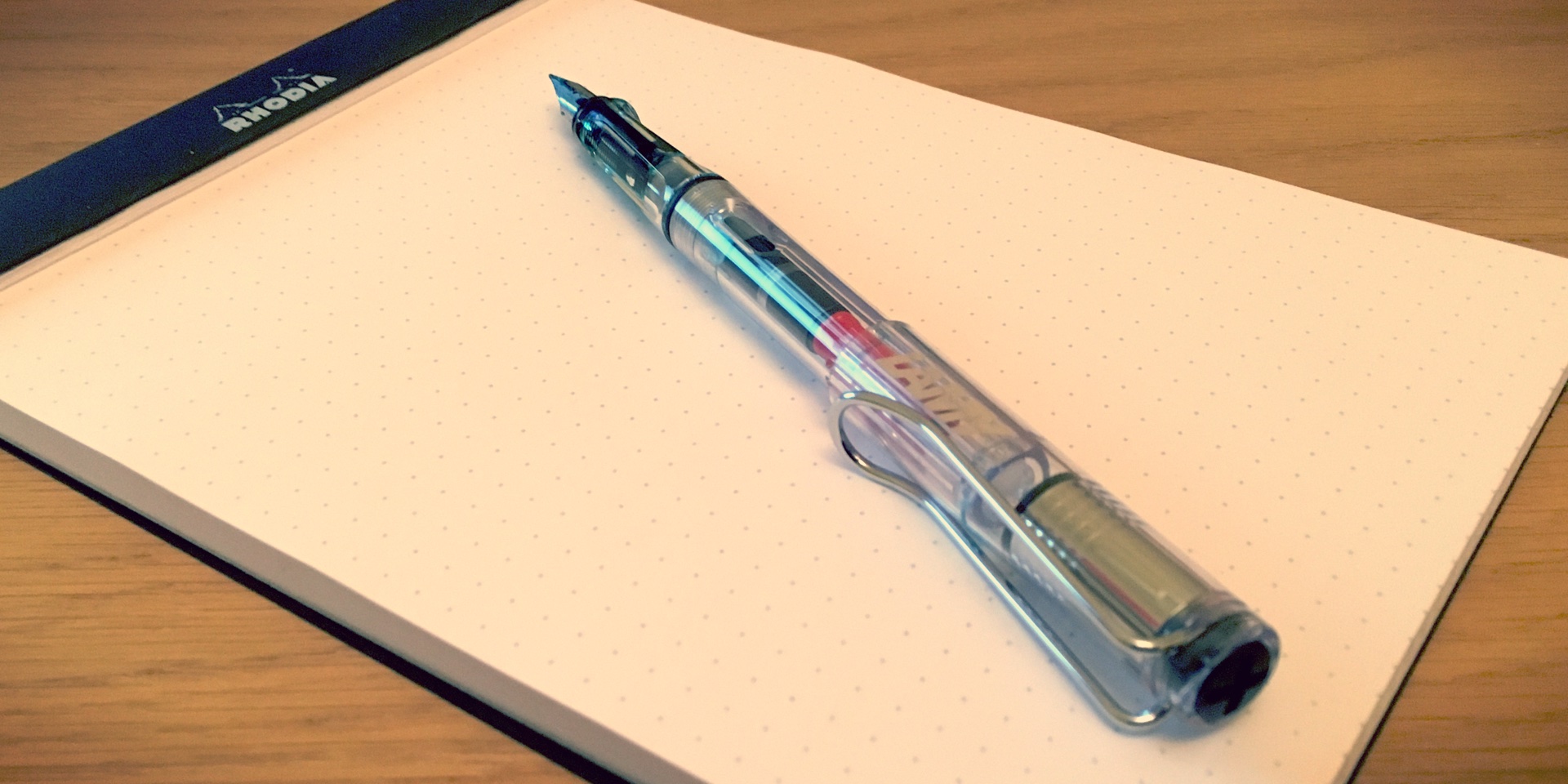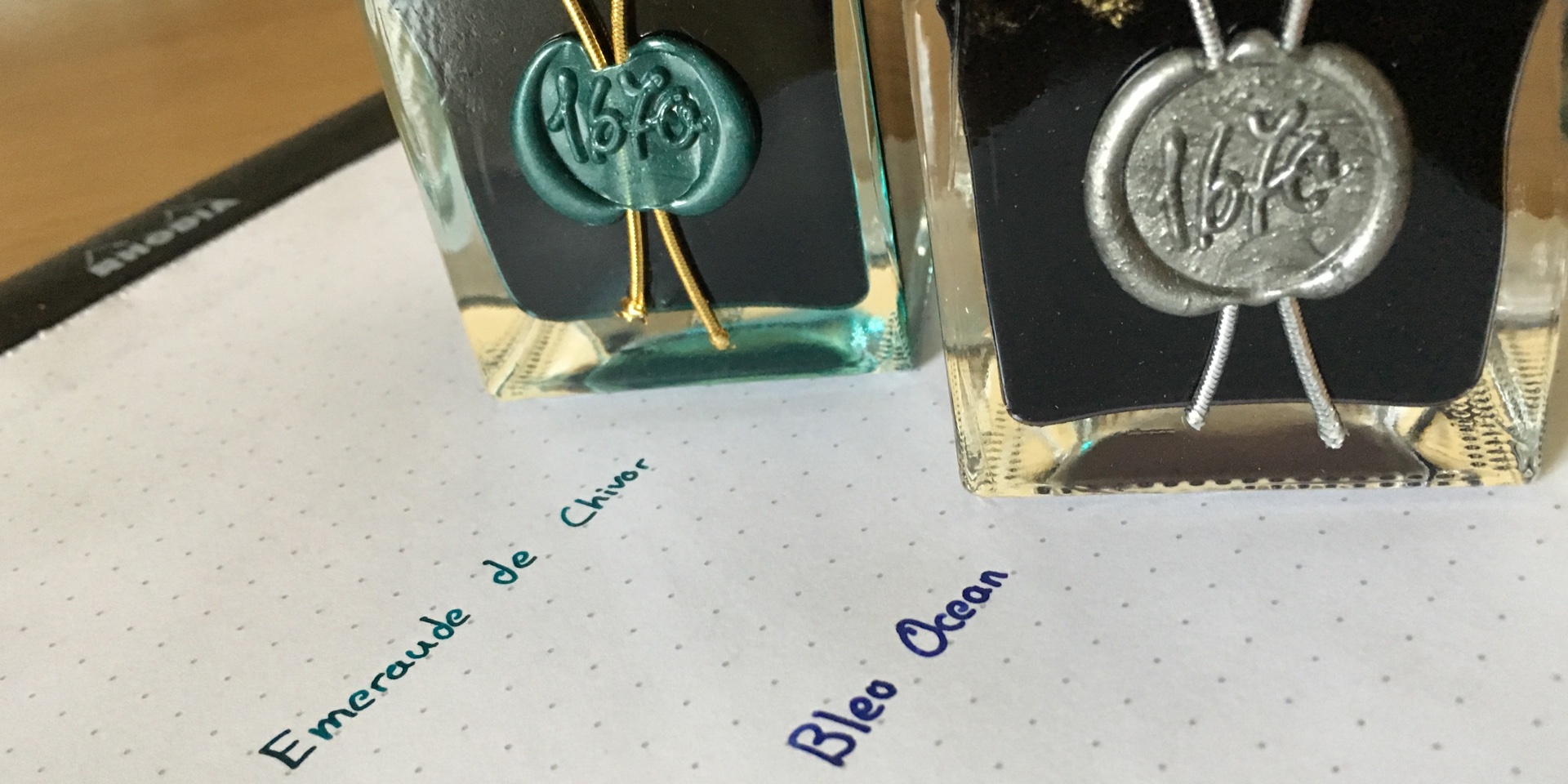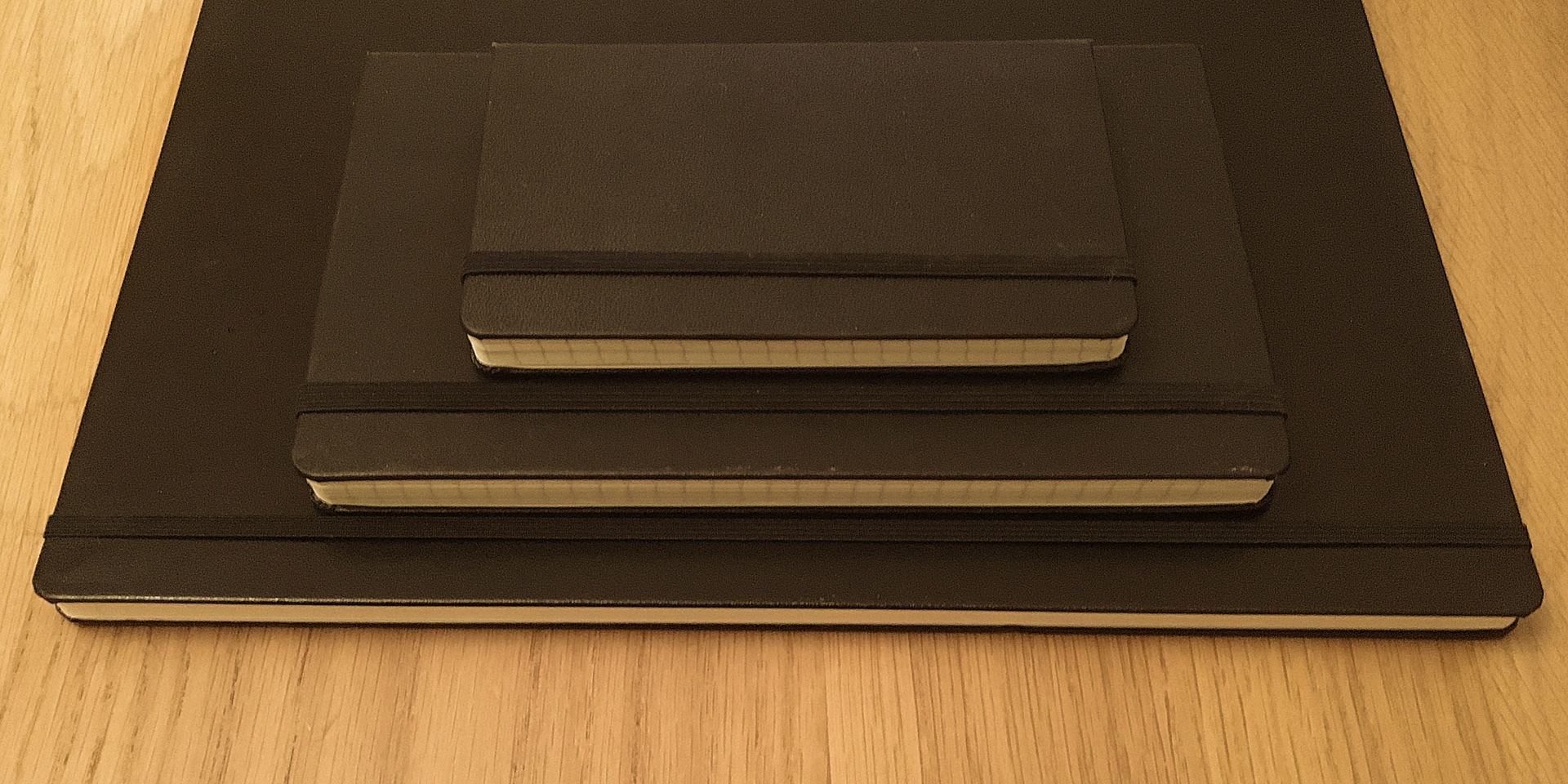Writing
January 7, 2017
Surprisingly, for a computer science student, I evenly split my time between typing and writing by hand. I generally begin by writing out my notes and problem sheets by hand before later preparing a typeset version of them, depending on what is required. In this first of a two part series I discuss the pens, inks, paper, and notebooks that I use, and why I often choose to write by hand.
For most of the last decade I’ve exclusively used fountain pens, with occasional forays into ball points, roller balls, and fine liners. Fountain pens have the significant advantage that ink will flow out of them with very little pressure, whereas a ball point requires you to apply pressure directly to the page, which is significantly less comfortable. The section (the part of the pen you grip) is also far nicer to hold on most fountain pens, firstly because it is often far wider than that of a ball point, thus keeping reasonable separation between your fingers, but also because many pens will also be shaped for holding (see the pictures of Lamy pens below) comfortably.
Unusually for a fountain pen user, I rarely write in cursive and do not italicise my letters. The main reason for this is that I have to write a lot of mathematical notation, and I’ve found it helps to be consistent between text and equations. I do, however, enjoy calligraphy but don’t do it for regular note taking.

At the moment I am currently switching between Parker, Lamy, and Pilot pens. Parker pens are widely available in the UK, and I’ve found them to write very smoothly. My Parker pens all have medium nibs, which forces me to write slightly larger to ensure proper separation between characters. More recently I’ve come to enjoy using Lamy pens, which are often inexpensive, with fine nibs. I particularly like my Lamy demonstrator pen, which has a clear case, allowing you to see the internal working of the pen.

In nearly all my pens I use converters, rather than ink cartridges, as this allows me to use a far broader variety of inks. Until very recently I exclusively used Parker Blue-Black, but I’ve come to find the colour a little too grey. Instead, I have started using J. Herbin 1670 inks, with Emerald of Chivor and Ocean Blue pictured below:

To say these inks are fantastic is an understatement. The ink flows perfectly in all my fountain pens, and both have a deep, rich colour. The emerald ink contains small flecks of gold, so the writing will sparkle in some lighting conditions. These inks are very expensive compared to most, but they are by far the best I’ve ever used.
From personal experience I must also recommend Amodex Ink Stain Remover, especially if you use thicker, oil based inks. Aside from a dip pen that I use infrequently for calligraphy most of my pens do not have a tendency to leak, but when they do this stuff is a life saver.
Whilst pens and ink are important, the quality of the paper I write on is equally important to me. When I was at school I tended to use Ryman Superior paper, which is thick enough to avoid bleeding with most inks. The paper is, however, quite coarse so I’ve therefore switched to using Rhodia pads instead. I started with a dot pad, which is great for diagrams and testing pens or inks, but I then began using the larger lined pads. I recommend Rhodia Nº 19 in white with lined pages. The pages of this pad do not come hole punched, and have a margin that is slightly too wide for my liking (although they’re good for taking notes) but the paper has a much smoother finish than the Ryman paper. I’ve found that when writing on the back of sheets in Rhodia pads (which fold at the top, with a perforated edge for each page) it is generally best to either only fold over the top few sheets onto the back of the pad, or tear it off immediately.

As well as paper pads, I also write a great deal in notebooks. I currently use Moleskine and Leuchtturm notebooks, and I far prefer the latter. My Moleskine notebooks are smaller, so I tend to use them for todo lists and for jotting ideas down, whereas I tend to take longer notes in the larger (A4) Leuchtturm notebook. The paper is also more translucent in Moleskine notebooks, meaning that you get slightly more bleeding. The Leuchtturm notebook also has page numbers and a table of contents, which make it ideal for university notes (although, sadly, they don’t come cheap). As all these notebooks are narrow ruled I’ve preferred to write with a fine nib and also use a darker ink colour, as the pages are not pure white. Fine liners also work well in these notebooks, but with ball points you generally have to apply so much pressure that you’ll mark the page below. Furthermore, I wouldn’t recommend using Lamy roller balls or the Moleskine pen in these notebooks, as the former is much to thick and the latter smudges too easily.
Whilst much slower than typing, I enjoy writing by hand because it gives me a lot more creative freedom over the appearance of my writing, is more ergonomic than typing, and the slower pace tends to force me to think a great deal more about what I’m writing.
Overall, I am very happy with my current writing setup, and I look forward to evolving it in the future. In the second of this two part series I will discuss the software and hardware that I use for typing.